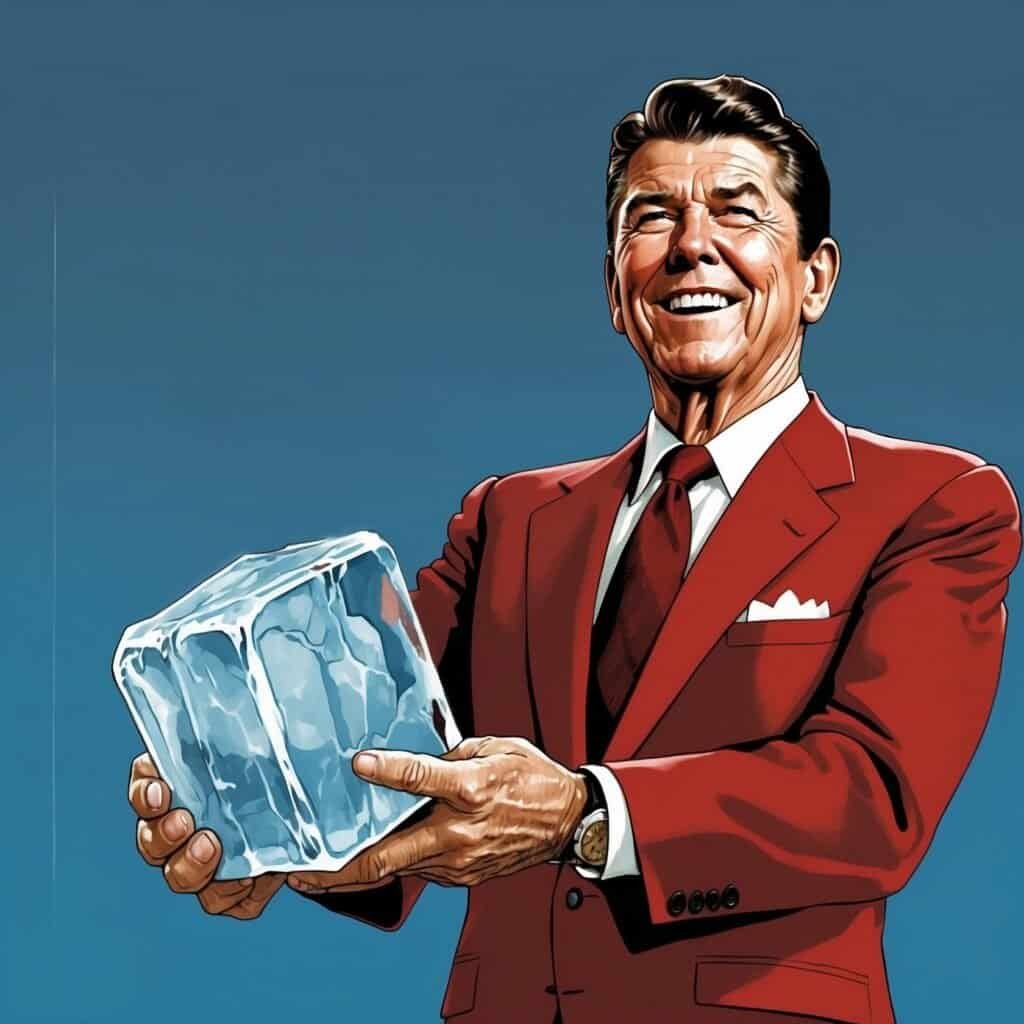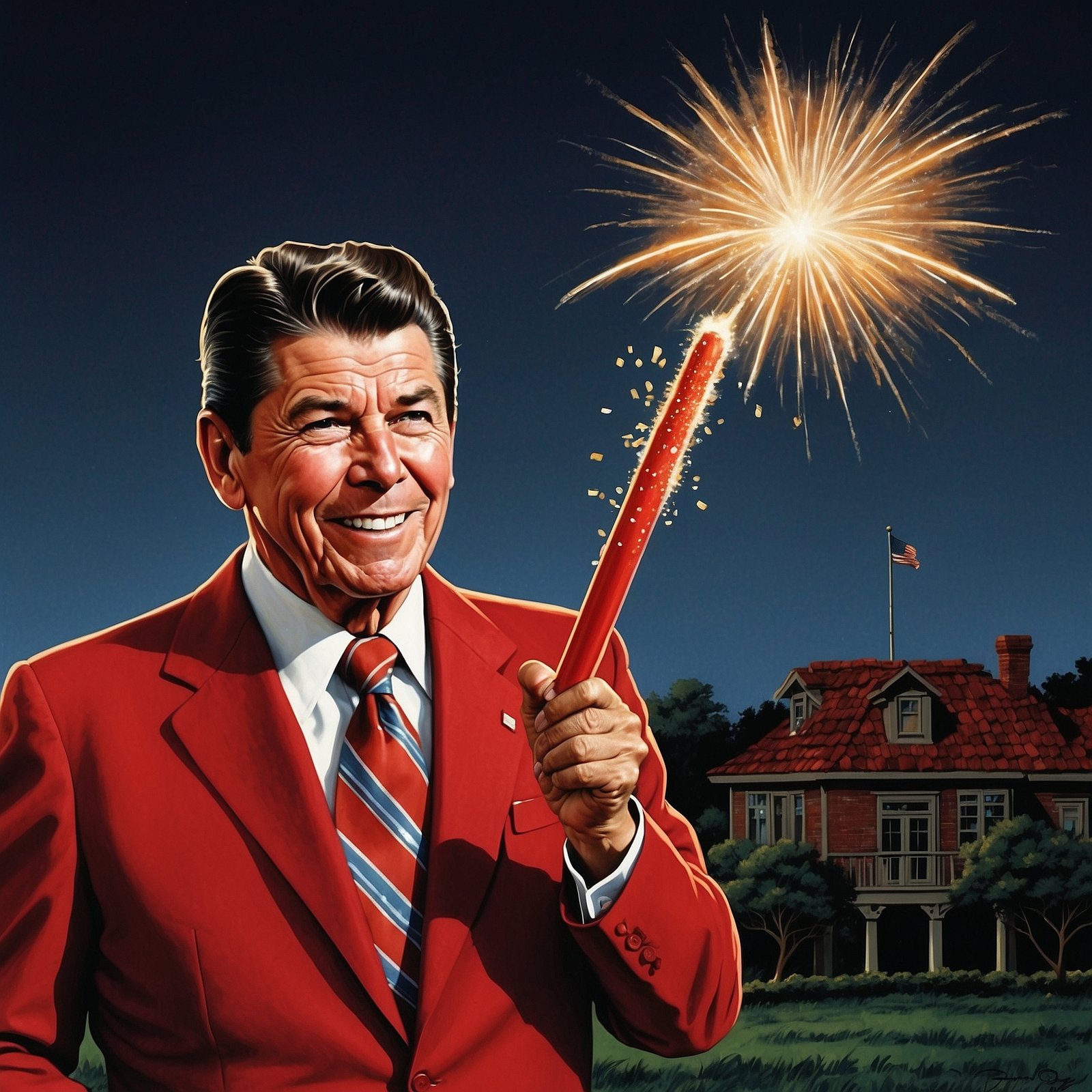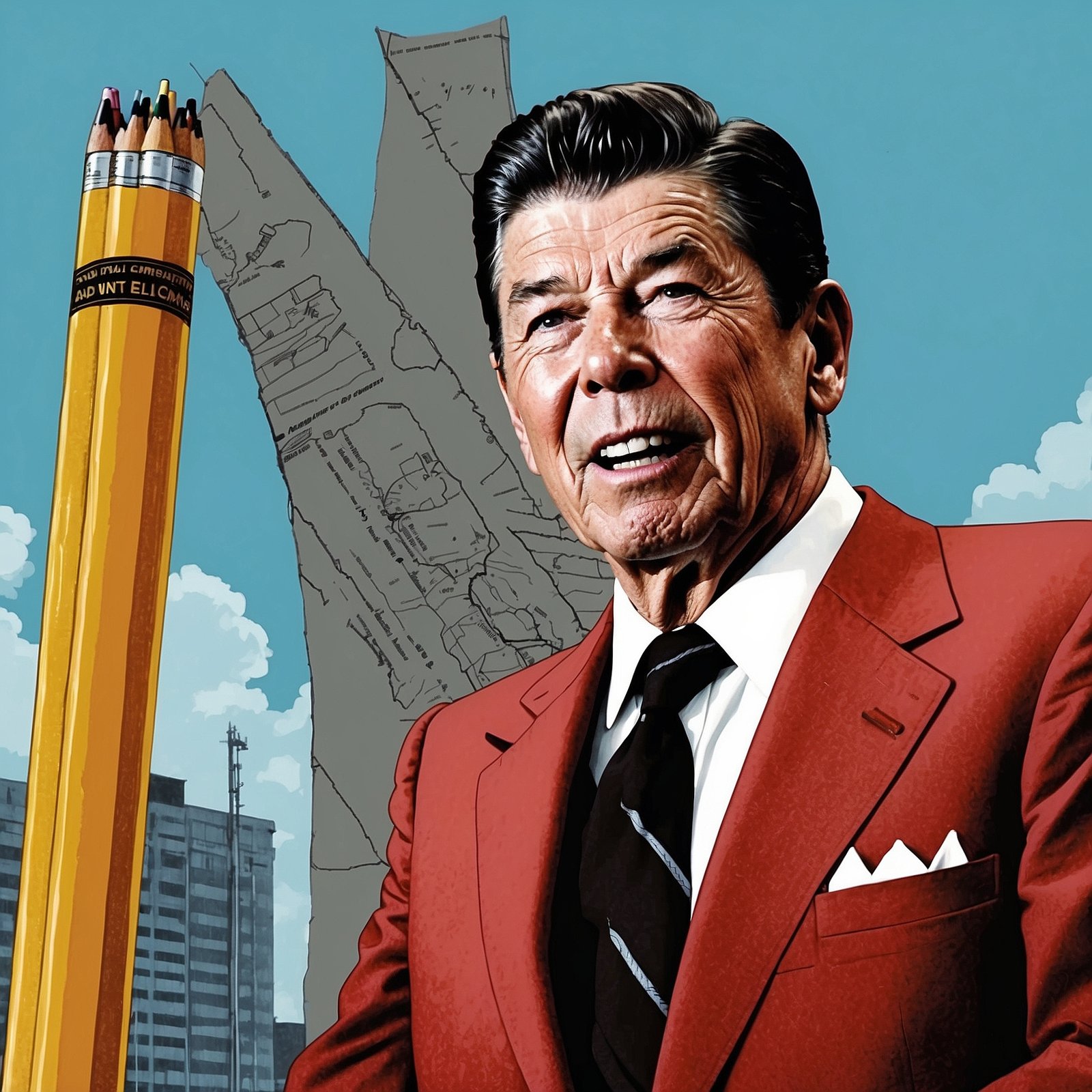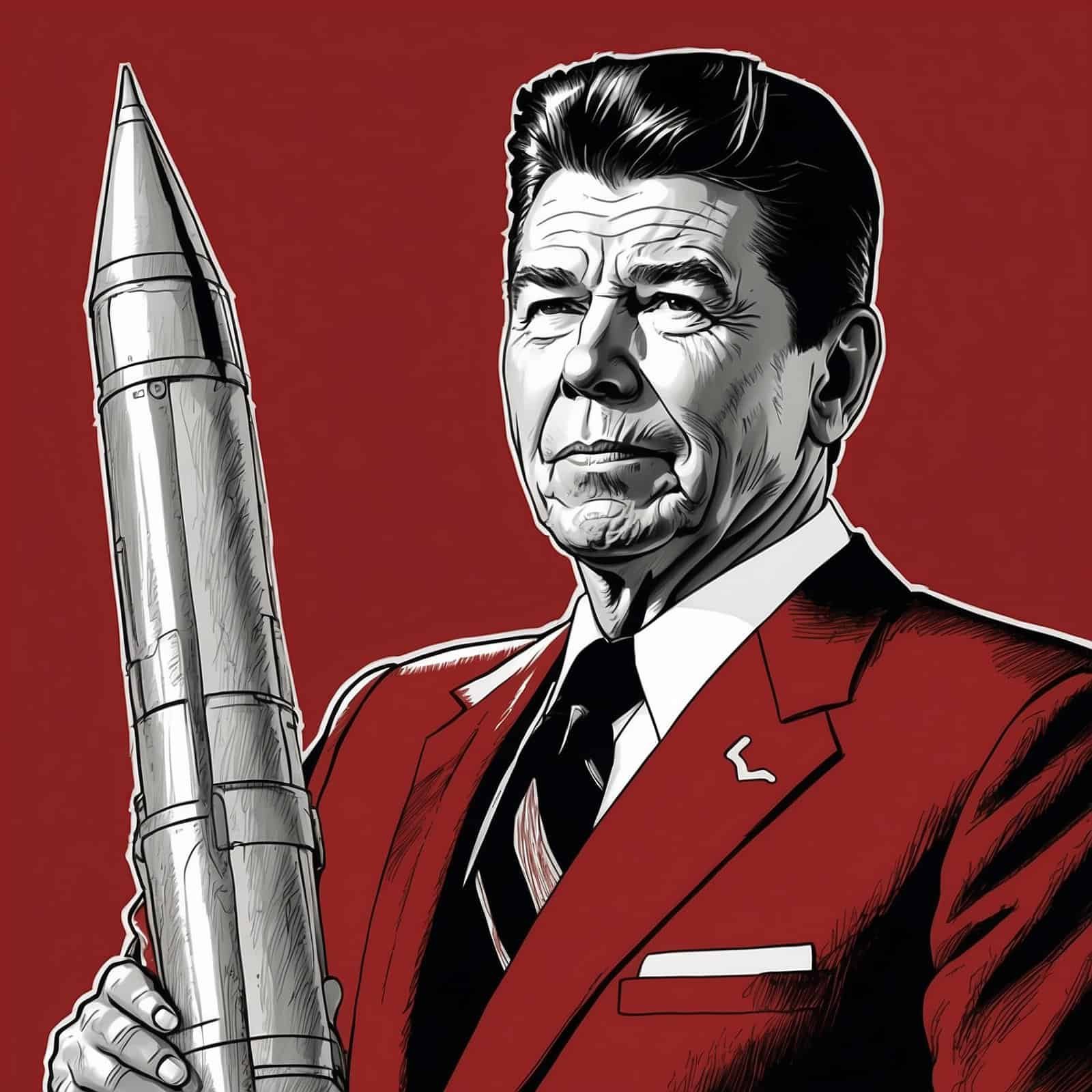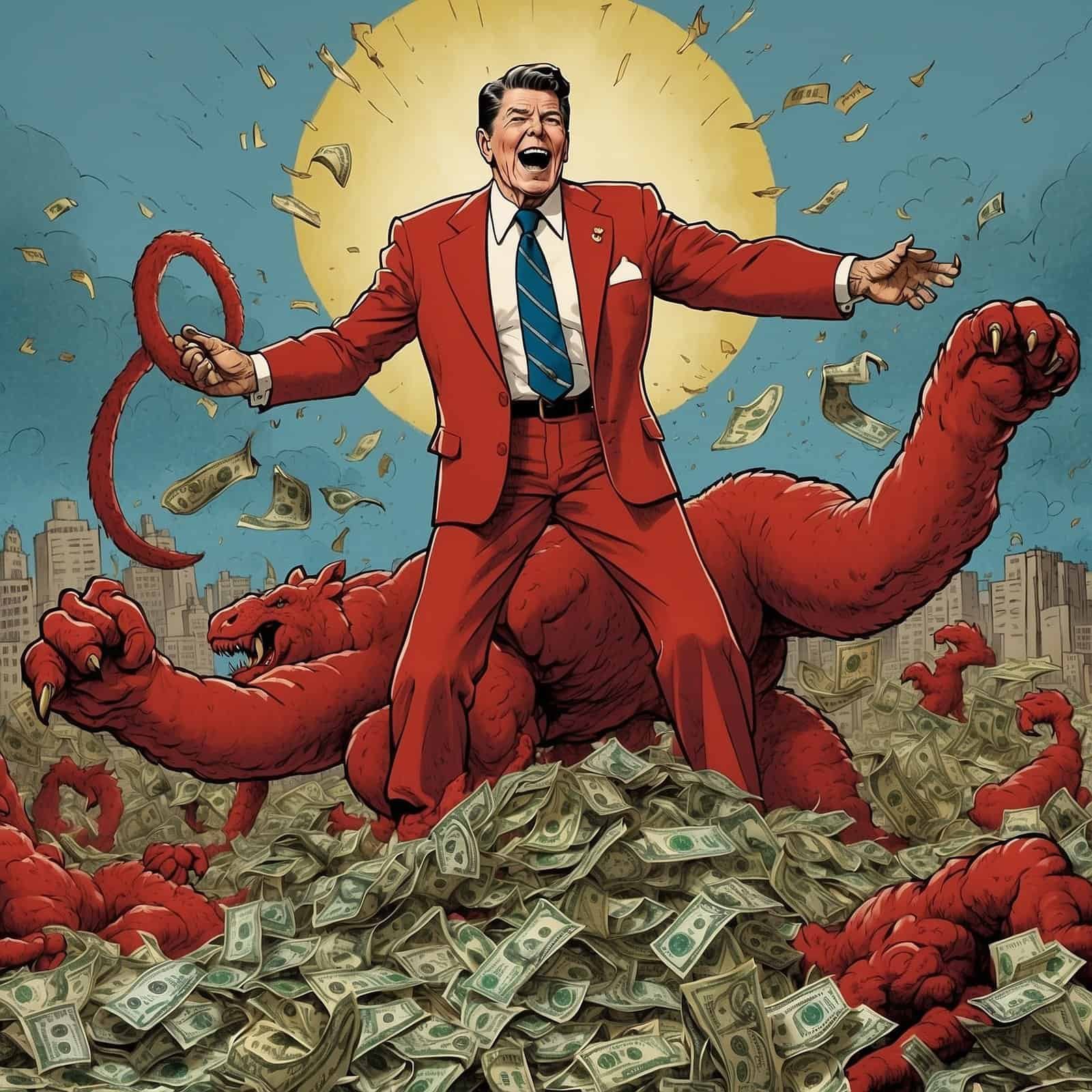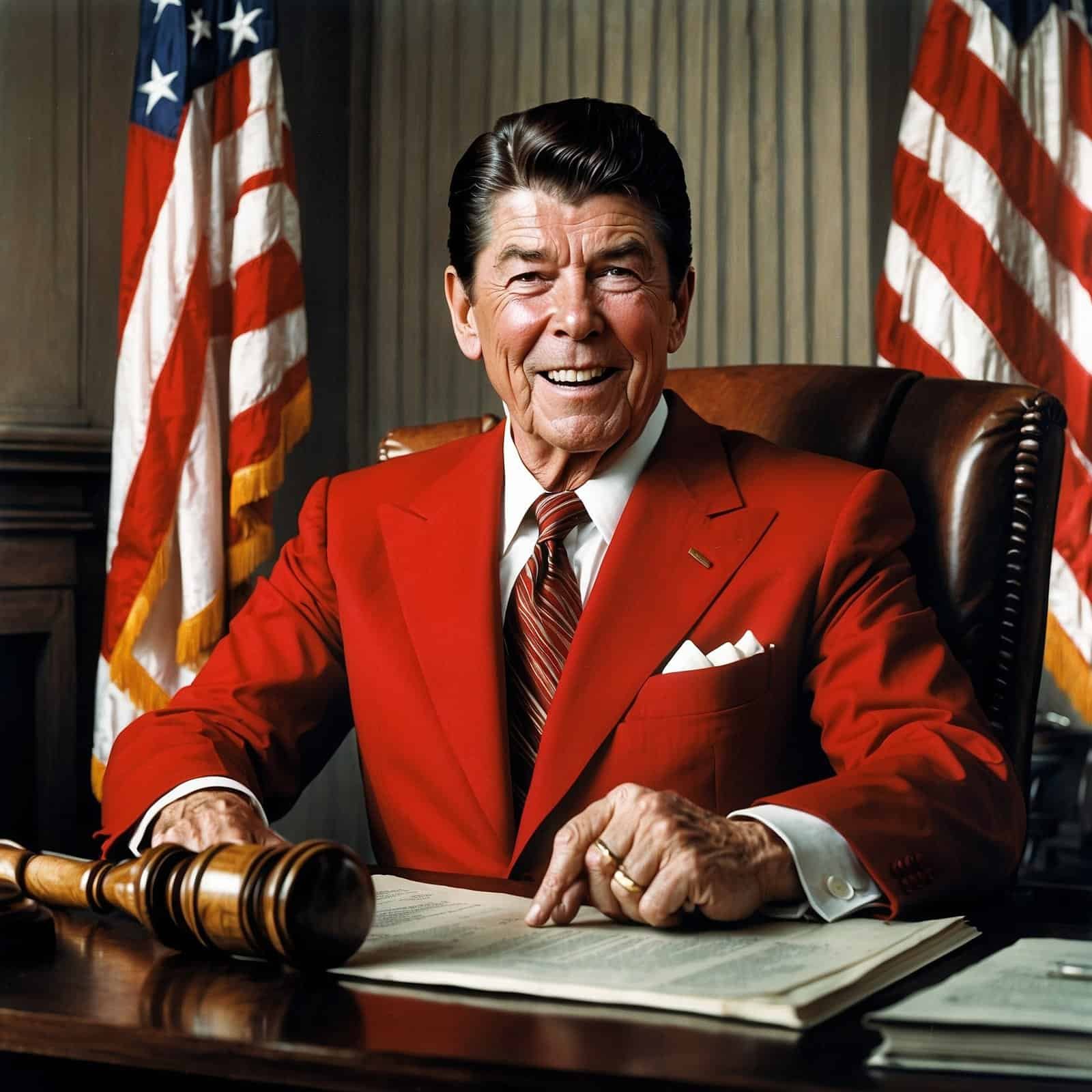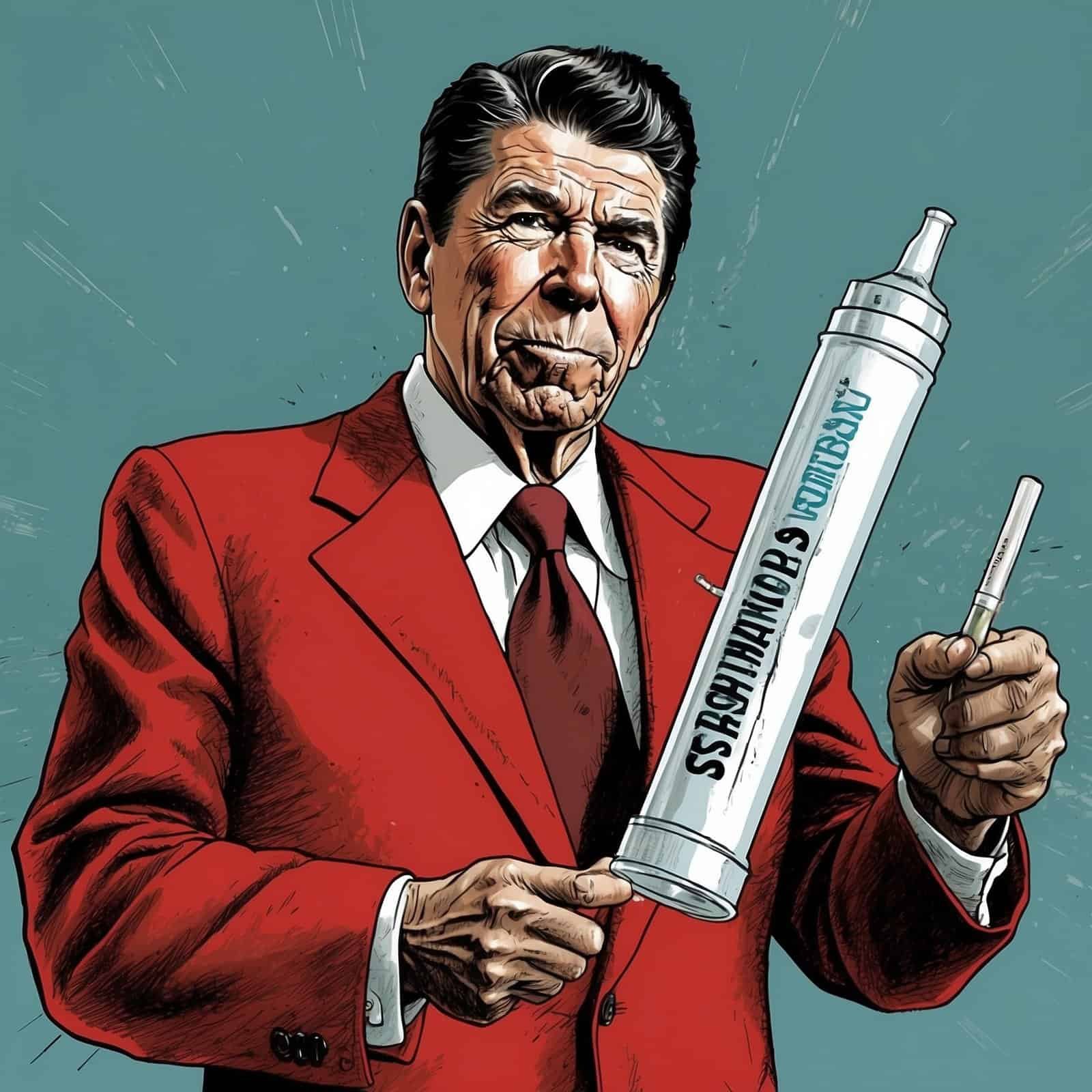Reagan’s Checkmate: How the Gipper Outsmarted the Soviets
Imagine it’s the 1980s, and the world stage resembles a high-stakes chess match. On one side, you’ve got the United States, and on the other, the Soviet Union. They’re locked in a battle of wits, each trying to outmaneuver the other like siblings fighting over the TV remote. Enter Ronald Reagan, a man who didn’t just want to win the game; he aimed to flip the board and start a new one altogether!
When Reagan took office in 1981, you could cut the tension with a knife. The Cold War wasn’t just chilly; it was Arctic. Simple disagreements between the superpowers turned into dramatic showdowns that would make reality TV producers jealous. Reagan knew that flexing America’s muscles alone wouldn’t solve this – we needed a game plan, and boy, did he deliver!
The “Evil Empire” Strategy: More Than Just Name-Calling
Reagan didn’t see the Soviet Union as just another country on the map. No sir, he saw them as the big bad wolf in a global fairy tale. He famously dubbed them the “Evil Empire.” It was like calling your grumpy neighbor’s yappy Chihuahua “Cerberus, Guardian of the Underworld.” But Reagan wasn’t all talk – he backed up his words with action.
Reagan’s Power Play
- Increased defense spending
- Pushed for nuclear missile deployment in Europe
- Strengthened NATO alliances
- Implemented economic pressure on the Soviet Union
While Democrats were wringing their hands and suggesting we send the Soviets a fruit basket, Reagan was building an arsenal that said, “Don’t even think about messing with the USA.” It’s like bringing a tank to a water balloon fight – sure, it might be overkill, but no one’s going to question your commitment!
Champion of Freedom: More Than Just Words
Reagan understood that people everywhere crave freedom and prosperity. So, he became freedom’s biggest cheerleader, promoting human rights across the globe. His speeches weren’t just hot air; they were like verbal grenades in the battle for hearts and minds.
“Mr. Gorbachev, tear down this wall!” – Ronald Reagan, 1987
Can you imagine a Democrat saying that? They’d probably suggest a nice mural on the wall instead, or maybe a “free hugs” station at Checkpoint Charlie.
A Multifaceted Approach: Threats, Negotiations, and Space Picnics
Reagan’s strategy wasn’t just about rattling sabers. He mixed tough talk with smart diplomacy. Picture a potluck where half the guests bring casseroles, and the other half bring boxing gloves. Reagan? He brought both and invited everyone to dinner.
This led to groundbreaking arms reduction talks. It’s as if Reagan said, “Why fight over the moon when we can have a peaceful picnic in space?” Meanwhile, Democrats were probably still debating whether Tang or Kool-Aid would be more appropriate for a space picnic.
The Star Wars Initiative: Reagan’s Sci-Fi Masterstroke
Remember the Strategic Defense Initiative (SDI)? Dubbed “Star Wars,” it wasn’t about lightsabers and Wookiees. It was Reagan’s ambitious plan to create a space-based missile defense system. Critics laughed it off as fantasy, but it kept the Soviets on their toes.
Impact of SDI on the Soviet Union
- Forced Soviets to increase military spending
- Strained already weak Soviet economy
- Created technological uncertainty
- Contributed to the eventual collapse of the USSR
While Democrats were probably busy writing strongly-worded letters to ET, Reagan was using the mere idea of space lasers to make the Soviets sweat. Now that’s what I call star power!
The Gorbachev Factor: Reagan’s Perfect Dance Partner
Enter Mikhail Gorbachev, the Soviet leader who decided to shake things up with his policies of Glasnost and Perestroika. It’s like he showed up to a black-tie event wearing a Hawaiian shirt. Not exactly a smooth move for keeping a communist regime together!
Reagan, sharp as a tack, saw this golden opportunity. He engaged with Gorbachev, finding common ground while his steadfast policies continued to chip away at the Soviet regime. It was crumbling faster than a stale cookie at a Weight Watchers meeting!
The End of an Era: Freedom Rings
Eventually, Reagan’s mix of tough talk and clever diplomacy paid off. The Cold War fizzled out like a wet firecracker. In 1989, the Berlin Wall came tumbling down – a sight that had freedom lovers cheering worldwide. Reagan’s approach proved that a blend of strength, wit, and unwavering conservative values could move mountains – or in this case, walls.
Conclusion: Lessons from the Gipper
Reagan’s Cold War victory is a testament to the power of principled leadership. While Democrats were probably still trying to decide on the perfect shade of white for their surrender flags, Reagan was changing the course of history. He didn’t just play the game; he rewrote the rulebook and made sure everyone had a good time doing it.
So, let’s raise a glass to the Gipper – a man who showed us that with the right mix of courage, humor, and rock-solid conservative values, you can not only win the day but also ensure that freedom rings loud and clear across the world. Here’s to a foreign policy that combines wisdom, fun, and an unshakable commitment to liberty – something our friends on the left could learn a thing or two about!
Table of Contents
- Reagan’s Checkmate: How the Gipper Outsmarted the Soviets
- The “Evil Empire” Strategy: More Than Just Name-Calling
- Champion of Freedom: More Than Just Words
- A Multifaceted Approach: Threats, Negotiations, and Space Picnics
- The Star Wars Initiative: Reagan’s Sci-Fi Masterstroke
- The Gorbachev Factor: Reagan’s Perfect Dance Partner
- The End of an Era: Freedom Rings
- Conclusion: Lessons from the Gipper
